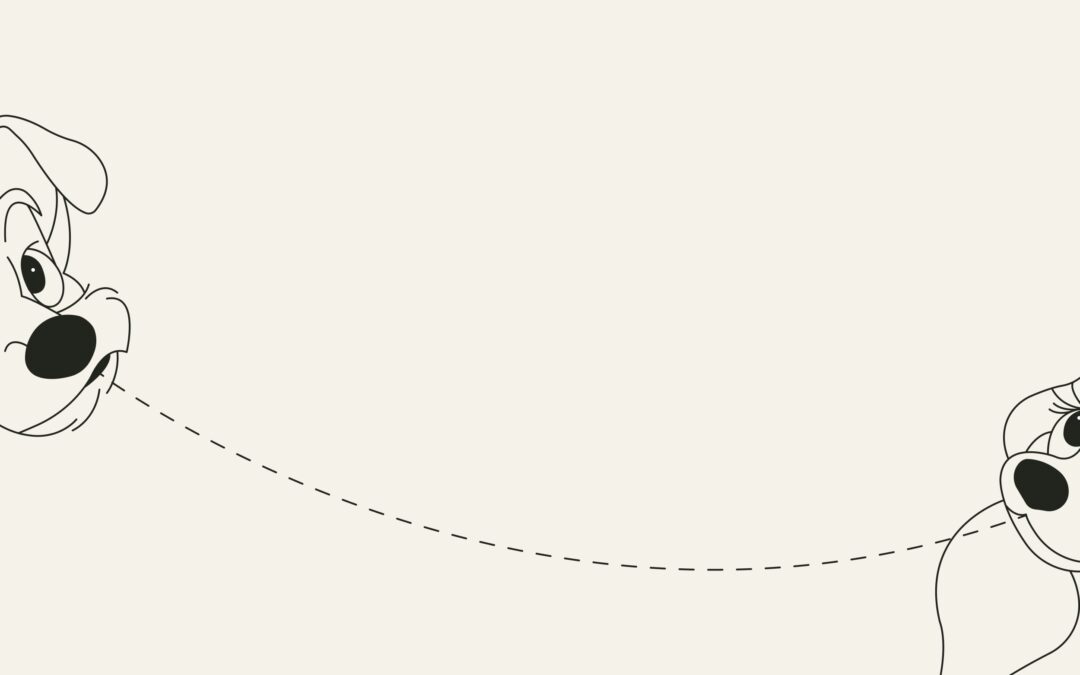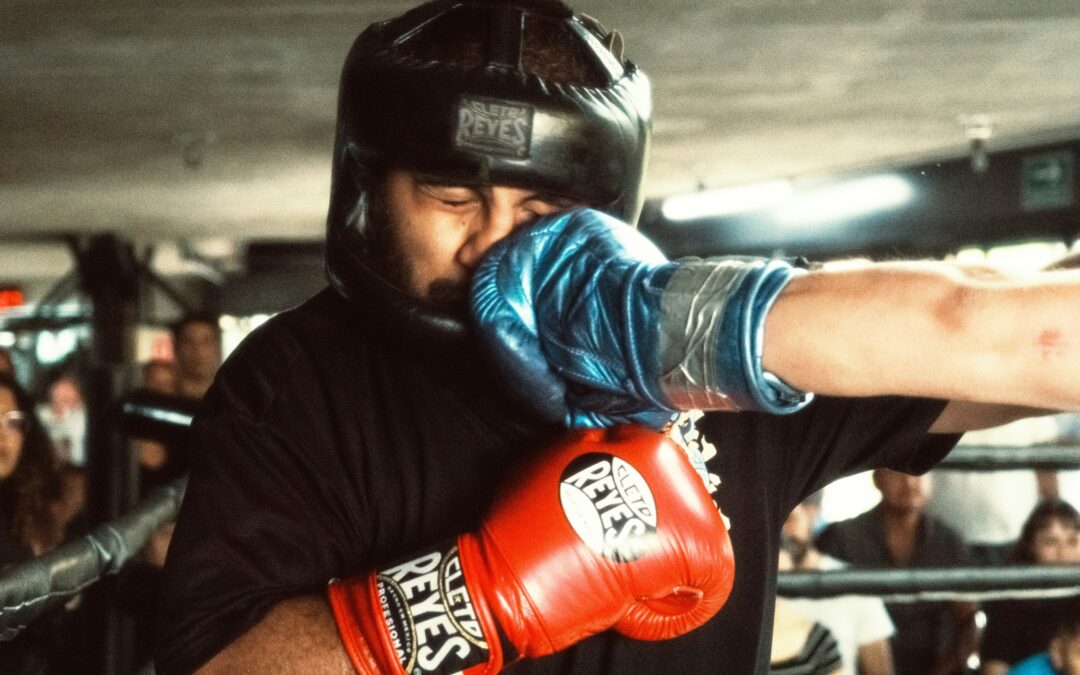
by Robyn Bolton | Jun 25, 2025 | Leadership, Stories & Examples, Strategy
Convinced that Strategic Foresight shows you a path through uncertainty? Great! Just don’t rush off, hire futurists, run some workshops, and start churning out glossy reports.
Activity is not achievement.
Learning from those who have achieved, however, is an excellent first activity. Following are the stories of two very different companies from different industries and eras that pursued Strategic Foresight differently yet succeeded because they tied foresight to the P&L.
Shell: From Laggard to Leader, One Decision at a Time
It’s hard to imagine Shell wasn’t always dominant, but back in the 1960s, it struggled to compete. Tired of being blindsided by competitors and external events, they sought an edge.
It took multiple attempts and more than 10 years to find it.
In 1959, Shell set up their Group Planning department, but its reliance on simple extrapolations of past trends to predict the future only perpetuated the status quo.
In 1965, Shell introduced the Unified Planning Machinery, a computerized forecasting tool to predict cash flow based on current results and forecasted changes in oil consumption. But this approach was abandoned because executives feared “that it would suppress discussion rather than encourage debate on differing perspectives.”
Then, in 1967, in a small 18th-floor office in London, a new approach to ongoing planning began. Unlike past attempts, the goal was not to predict the future. It was to “modify the mental model of decision-makers faced with an uncertain future.”
Within a few years, their success was obvious. Shell executives stopped treating scenarios as interesting intellectual exercises and started using them to stress-test actual capital allocation decisions.
This doesn’t mean they wholeheartedly embraced or even believed the scenarios. In fact, when scenarios suggested that oil prices could spike dramatically, most executives thought it was far-fetched. Yet Shell leadership used those scenarios to restructure their entire portfolio around different types of oil and to develop new capabilities.
The result? When the 1973 oil crisis hit and oil prices quadrupled from $2.90 to $11.65 per barrel, Shell was the only major oil company ready. While competitors scrambled and lost billions, Shell turned the crisis into “big profits.”
Disney: From Missed Growth Goals to Unprecedented Growth
In 2012, Walt Disney International’s (WDI) aggressive growth targets collided with a challenging global labor market, and traditional HR approaches weren’t cutting it.
Andy Bird, Chairman of Walt Disney International, emphasized the criticality of the situation when he said, “The actions we make today are going to make an impact 10 to 20 years down the road.”
So, faced with an unprecedented challenge, the team pursued an unprecedented solution: they built a Strategic Foresight capability.
WDI trained over 500 leaders across 45 countries, representing five percent of its workforce, in Strategic Foresight. More importantly, Disney integrated strategic foresight directly into their strategic planning and performance management processes, ensuring insights drove business decisions rather than gathering dust in reports.
For example, foresight teams identified that traditional media consumption was fracturing (remember, this was 2012) and that consumers wanted more control over when and how they consumed content. This insight directly shaped Disney+’s development.
The results speak volumes. While traditional media companies struggled with streaming disruption, Disney+ reached 100 million subscribers in just 16 months.
Two Paths. One Result.
Shell and Disney integrated Strategic Foresight differently – the former as a tool to make high-stakes individual decisions, the latter as an organizational capability to affect daily decisions and culture.
What they have in common is that they made tomorrow’s possibilities accountable to today’s decisions. They did this not by treating strategic foresight as prediction, but as preparation for competitive advantage.
Ready to turn these insights into action? Next week, we’ll dive into the tools in the Strategic Foresight toolbox and how you and your team can use them to develop strategic foresight that drives informed decisions.

by Robyn Bolton | Jun 10, 2025 | Customer Centricity, Leadership
The data speaks for itself: Your employees don’t believe you practice customer-first leadership.
According to Gallup’s research, only one in five of your people think you make decisions with customers in mind. That means four out of five watch you say one thing and do another. Every. Single. Day.
And it’s getting worse. Fewer than three in ten of your employees feel proud of what they’re building for your customers. As a result, employee pride in what they create and deliver is at an all-time low.
You know what this means, don’t you? Your customer-first messaging isn’t inspiring anyone—it’s insulting them. Because they see the truth behind your town hall speeches, and the truth is that customers aren’t first.
How Are We Still Screwing This Up?
Customer-centricity has been business gospel for decades. We’ve got libraries full of case studies, armies of consultants, and enough “customer first” wall art to wallpaper the Apple HQ. So, how the hell are we getting worse at this?
Because most leaders treat customer focus like a box to check. They say the right words in town halls and analyst calls but make decisions that prioritize quarterly numbers, internal politics, and whatever shiny new idea they come up with.
Leaders say customers come first, then cut support staff to hit margins. They preach customer obsession, then ignore feedback that requires real change. They commission expensive customer journey maps, then never look at them again.
Employees see it all.
And when employees stop believing in what they deliver, customers know it immediately. Every burned-out support call, every half-hearted sales pitch, every policy that punishes the customer to boost the company’s profit.
You CAN do better
You only need to look as far as the telecom industry (?!?!?!) for an $800 million example.
In 2005, Arlene Harris co-founded GreatCall (now Lively) and did something radical: she built a company based on the Jobs to be Done of senior citizens. While everyone else chased flashy features for younger markets, she recognized that older Americans didn’t want a smartphone—they wanted a lifeline.
Harris delivered with the Jitterbug, a simple flip phone with giant buttons. But that was just the beginning. Focusing more on helping customers stay safe and connected than cool features for the tech geeks, she quickly built an ecosystem offering emergency response, health monitoring, 24/7 human support, and caregiver connectivity.
When Best Buy acquired GreatCall for $800 million in 2018, they weren’t buying a phone company. They were buying something rare: a trusted, high-value services company with intensely loyal customers.
Harris succeeded by doing precisely what the data shows most leaders aren’t doing: genuinely understanding and serving real customer needs.
WILL you do better?
Customer-first leadership isn’t a box to check. It’s basic leadership integrity. It’s the difference between meaning what you say and just saying what sounds good.
When four out of five of your employees don’t trust your customer commitment, the problem isn’t your strategy deck, digital transformation, or tariffs. The problem is you.
So here’s your moment of truth: When was the last time you listened to customer service calls? Not the sanitized highlights your team shows you—the raw, unfiltered frustration of someone who can’t get help. When did you last sit in a waiting room and watch how people navigate your system? Or stock a shelf and see what customers actually do?
If you can’t remember, that’s your answer. If you’ve never done it, that’s worse.
The question is: Will you keep performing customer-centricity, or start practicing it?

by Robyn Bolton | Apr 9, 2025 | Innovation, Leadership, Tips, Tricks, & Tools
“A Few Good Men” is one of my favorite movies. As much as I love Jack Nicholson’s classic line, “You can’t handle the truth!” lately, I’ve been thinking more about a line delivered by Lt. Daniel Kaffee, played by Tom Cruise – “And the hits just keep on comin’.”
But, just like Lt. Kaffee had to make peace with Lt. Cdr JoAnne Galloway joining his Cuba trip, we must make peace with uncertainty and find the guts to move forward.
This is much easier said than done, but these three steps make it possible. Even profitable.
Where We Begin
Imagine you’re the CEO of Midwest Precision Components (MPW), a $75 million manufacturer of specialized valves and fittings. Forty percent of your components come from suppliers now subject to new tariffs, which, if they stay in effect, threaten an increase of 15% in material costs. This increase would devastate your margins and could require you to reduce staff.
Your competitors are scrambling to replace foreign suppliers with domestic ones. But you know that such rapid changes are also risky since higher domestic prices eat into your margins (though hopefully less than 15%), and insufficient time to quality test new parts could lead to product issues and lost customers. And all this activity assumes that the tariffs stay in place and aren’t suddenly paused or withdrawn.
3 Steps Forward
Entering the boardroom, you notice that the CFO looks more nervous than usual, and your head of Supply Chain is fighting a losing battle with a giant stack of catalogs. Taking a deep breath, you resolve to be creative, not reactive (same letters, different outcomes), and get to work.
Step 1: Start with the goal and work backward. The goal isn’t changing suppliers to reduce tariff impact. It’s maintaining profit margins without reducing headcount or product quality. With your CFO, you whiteboard a Reverse Income Statement, a tool that starts with required (not desired) profits to calculate necessary revenues and allowable costs. After running several scenarios, you land on believable assumptions that result in no more than a 4% increase in costs.
Step 2: Identify and prioritize assumptions. With the financial assumptions identified, you ask the leadership team to list everything that must be true to deliver the financial assumptions, their confidence that each of their assumptions is true, and the impact on the business and its bottom line if the assumption is wrong.
Knowing that your head of Sales is an unrelenting optimist and your Supply Chain head is mired in a world of doom and gloom, you set a standard scale: High confidence means betting your annual salary, medium is a team dinner at a Michelin-starred restaurant, and low is a cup of coffee. High impact puts the company out of business, medium requires major shifts, and low means extra work but nothing crazy.
Step 3: Attack the deal killers. Going around the room, each person lists their “Deal Killers,” the Low Confidence – High Impact assumptions that pose the highest risk to the business. After some discussion to determine the primary assumptions at the beginning of causal chains, you select two for immediate action: (1) Alternative domestic suppliers can be found for the two highest-cost components, and (2) Current manufacturing processes can be quickly adapted to accommodate parts from new suppliers.
A Plan. A Timeline. A Sense of Calm.
With this new narrowed focus, your team sets a shared goal of resolving these two assumptions within 30 days. Together, they set clear weekly deliverables and reallocate time and people to help meet deadlines.
A sense of calm settles on the team. Not because they have everything figured out, but because they know exactly what the most important things to be done are, that those things are doable, and they are working together to do them.
How could you use these three steps to help you move forward through uncertainty?

by Robyn Bolton | Apr 1, 2025 | Leadership, Stories & Examples, Strategy
If you’re leading a legacy business through uncertainty, pay attention. When The Cut asked, “Can Simon & Schuster Become the A24 of Books?” I expected puff-piece PR. What I read was a quiet masterclass in business transformation—delivered in three deceptively casual quotes from Sean Manning, Simon & Schuster’s new CEO. He’s trying to transform a dinosaur into a disruptor and lays out a leadership playbook worth stealing.
Seventy-four percent of corporate transformations fail, according to BCG. So why should we believe this one might be different? Because every now and then, someone in a legacy industry goes beyond memorable soundbites and actually makes moves. Manning’s early actions—and the thinking behind them—hint that this is a transformation worth paying attention to.
“A lot of what the publishing industry does is just speaking to the converted.”
When Manning says this, he’s not just throwing shade—he’s naming a common and systemic failure. While publishing execs bemoan declining readership, they keep targeting the same demographic that’s been buying hardcovers for decades.
Sound familiar?
Every legacy industry does this. It’s easier—and more immediately profitable—to sell to those who already believe. The ROI is better. The risk is lower. And that’s precisely how disruption takes root.
As Clayton Christensen warned in The Innovator’s Dilemma, established players obsess over their best customers and ignore emerging ones—until it’s too late. They fear that reaching the unconverted dilutes focus or stretches resources. But that thinking is wrong. Even in a world of finite resources, you can’t afford to pick one or the other. Transformation, heck, even survival, requires both.
“We’re essentially an entertainment company with books at the center.”
Be still my heart. A CEO who defines his company by the Job(to be Done) it performs in people’s lives? Swoon.
This is another key to avoiding disruption – don’t define yourself by your product or industry. Define yourself by the value you create for customers.
Executives love repeating that “railroads went out of business because they thought their business was railroads.” But ask those same executives what business they’re in, and they’ll immediately box themselves into a list of products or industry classifications or some vague platitude about being in the “people business” that gets conveniently shelved when business gets bumpy.
When you define yourself by the Job you do for your customers, you quickly discover more growth opportunities you could pursue. New channels. New products. New partnerships. You’re out of the box —and ready to grow.
“The worry is that we can’t afford to fail. But if we don’t try to do something, we’re really screwed.”
It’s easy to calculate the cost of trying and failing. You have the literal receipts. It’s nearly impossible to calculate the cost of not trying. That’s why large organizations sit on the sidelines and let startups take the risks.
But there IS a cost to waiting. You see it in the market share lost to new entrants and the skyrocketing valuations of successful startups. The problem? That information comes too late to do anything about it.
Transformation isn’t just about ideas. It’s about choosing action over analysis. Or, as Manning put it, “Let’s try this and see what happens.”
Walking the Talk
Quotable leadership is cute. Transformation leadership is concrete. Manning’s doing more than talking—he’s breaking industry norms.
Less than six months into his tenure as CEO, he announced that Simon & Schuster would no longer require blurbs—those back-of-jacket endorsements that favor the well-connected. He greenlit a web series, Bookstore Blitz, and showed up at tapings. And he’s reframing what publishing can be, not just what it’s always been.
The journey from dinosaur to disruptor is long, messy, and uncertain. But less than a year into the job, Manning is walking in the right direction.
Are you?

by Robyn Bolton | Mar 26, 2025 | Strategy, Uncategorized
It’s easy to get complacent about your strategy skills. After all, our yearly “strategic planning” processes result in quarterly “strategic priorities” that require daily “strategic decisions.” So, it’s reasonable to assume that we know what we’re doing when it comes to strategy development.
I’ll admit I did. After all, I’ve written strategic plans for major brands, developed strategies for billion-dollar businesses, and teach strategy in a Masters program.
I thought I knew what I was doing.
Then ChatGPT proved me wrong.
How it Began
My student’s Midterm assignment for this semester is to develop, recommend, and support a strategy for the companies they’ve studied for the past seven weeks. Each week, we apply a different framework – Strategy Kernel, SWOT, Business Model Canvas, Porter’s 5 Forces, PESTLE, Value Chain – to a case study. Then, for homework, they apply the framework to the company they are analyzing.
Now, it’s time to roll up all that analysis and turn it into strategic insights and a recommended strategy.
Naturally, they asked me for examples.
I don’t have a whole lot of examples, and I have precisely none that I can share with them.
I quickly fed The LEGO Group’s Annual Report, Sustainability Report, and Modern Slavery and Transparency Statements into ChatGPT and went to work.
Two hours later, I had everything needed to make a solid case that LEGO needs to change its strategy due to risks with consumers, partners, and retailers. Not only that, the strategy was concise and memorable, with only 34 carefully chosen words waiting to be brought to life through the execution of seven initiatives.
Two hours after that, all of my genius strategic analysis had been poured into a beautifully designed and perfectly LEGO-branded presentation that, in a mere six slides, laid out the entire case for change (which was, of course, supported by a 10-page appendix).
The Moment
As I gazed lovingly at my work, I felt pretty proud of myself. I even toyed with the idea of dropping a copy off at LEGO’s Back Bay headquarters in case they needed some help.
I chuckled at my little daydream, knowing no one would look at it because no one asked for it, and no implementers were involved in creating it.
That’s when it hit me.
All the reasons my daydream would never become a reality also applied to every strategy effort I’ve ever been part of.
- No one looks at your strategy because it’s just a box to check to get next year’s budget.
- No one asks for it because they’re already working hard to maintain the status quo. They don’t have the time or energy to imagine a better future when they’re just trying to get through today.
- No one responsible for implementing it was involved in creating it because strategy is created at high levels of the organization or outsourced to consultants.
What the strategy is doesn’t matter.*
What matters is how the strategy was created.
Conversation is the only way to create a successful, actionable, and impactful strategy.
Conversation with the people responsible for implementing it, they people on the ground and the front lines, the people dealing with the ripple effects of all those “strategic” decisions.
How It’s Going
Today, I’m challenging myself—and you—to make strategy a dialogue, not a monologue. To value participation over presentation. Because strategy without conversation isn’t strategy at all—it’s just a beautiful document waiting to be forgotten.
Who are you inviting into your next strategy conversation that isn’t usually there but should be? Share in the comments below.




